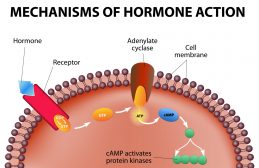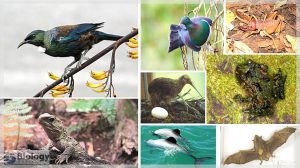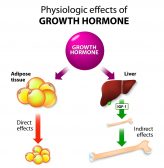Definition
noun
An aggregate of pigment molecules, each made up of cross-linked 5,6-dihydroxyindole (DHI) and 5,6-dihydroxyindole-2-carboxylic acid (DHICA) polymers, and is responsible for the black or brownish pigmentation of skin, feathers, hair, fur, eyes, scales, etc.
Supplement
Melanin is a term to refer to a group of pigments produced from the oxidation of tyrosine, followed by polymerization. It is produced by and stored in melanocytes or melanophores. The colours may vary and may be used as a basis for classifying melanin. There are three basic types of melanin: (1) eumelanin, (2) pheomelanin, and (3) neuromelanin.
Eumelanin is the most common and abundant type. It is composed of an aggregate of molecules that render brown or black in colour. Eumelanin polymer is made up of cross-linked 5,6-dihydroxyindole (DHI) and 5,6-dihydroxyindole-2-carboxylic acid (DHICA) polymers. There are two types of eumelanin, i.e. brown eumelanin and black eumelanin. Apart from the light-absorbing qualities that account for their respective colours, they also differ in the pattern of polymeric bonds. Eumelanin is produced through the process of melanogenesis, which includes a series of catalysed chemical reactions, starting from tyrosine, and with tyrosinase as the key enzyme.
In humans, it accounts for the pigmentation of the skin and hair. In particular, a small quantity of black eumelanin (in the absence of other pigments as well) results in gray hair. A small amount of brown eumelanin (in the absence of other pigments as well) results in blond hair. A defective tyrosinase production leads to the disruption of melanin production (including eumelanin) and therefore results in oculocutaneous albinism.
Word origin: eu– (true, well, good”) + Greek melas (“black, dark”)
See also:
Dictionary > Eumelanin
You will also like...

Mātauranga Māori and Science
Mātauranga Māori is the living knowledge system of the indigenous people of New Zealand, including the relationships t..

Neurology of Illusions
Illusions are the perceptions and sensory data obtained from situations in which human error prevents us from seeing the..

Homeostatic Mechanisms and Cellular Communication
Homeostasis is the relatively stable conditions of the internal environment that result from compensatory regulatory res..

Roots
This study guide tackles plant roots in greater detail. It delves into the development of plant roots, the root structur..

New Zealand’s Unique Fauna
Meet some of New Zealand's unique fauna, including endemic insects, frogs, reptiles, birds, and mammals, and investigate..

Animal Growth Hormones
Hormones are produced in the endocrine glands of animals. The pituitary gland and hypothalamus are the most impor..

